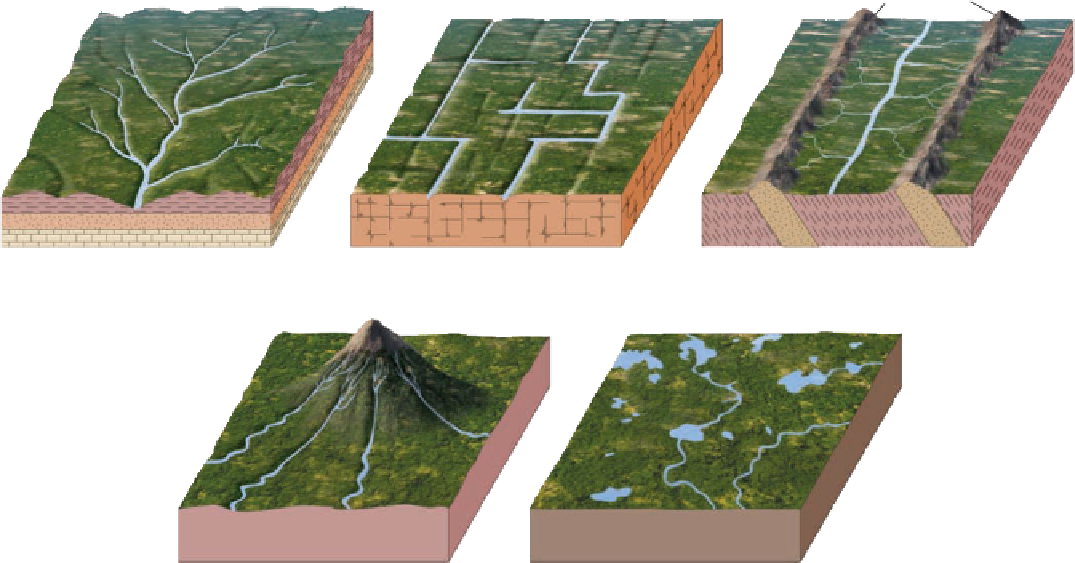Geology Reference
In-Depth Information
◗
Figure 12.19
Drainage Patterns
Ridges of resistant rock
Dendritic drainage
Rectangular drainage
Trellis drainage
a
c
b
d
Radial drainage
Deranged drainage
e
so does human intervention. Geologists and engineers are well
aware that building a dam to impound a reservoir creates a
local base level (
equilibrium, meaning that all parts of the system dynami-
cally adjust to one another.
A
graded stream
is one with an equilibrium profile in
which a delicate balance exists among gradient, discharge,
fl ow velocity, channel shape, and sediment load so that neither
signifi cant erosion nor deposition takes place within its chan-
nel (Figure 12.22b). Such a delicate balance is rarely attained,
so the concept of a graded stream is an ideal. Nevertheless,
the graded condition is closely approached in many streams,
although only temporarily and not necessarily along their
entire lengths.
Even though the concept of a graded stream is an ideal,
we can anticipate the response of a graded stream to changes
that alter its equilibrium. For instance, a change in base level
would cause a stream to adjust as previously discussed. In-
creased rainfall in a stream's drainage basin would result
in greater discharge and fl ow velocity. In short, the stream
would now possess greater energy—energy that must be dis-
sipated within the stream system by, for example, a change
from a semicircular to a broad, shallow channel that would
dissipate more energy by friction. On the other hand, the
stream may respond by eroding a deeper valley, effectively
reducing its gradient until it is once again graded.
Vegetation inhibits erosion by stabilizing soil and
other loose surface materials. So a decrease in vegetation in
a drainage basin might lead to higher erosion rates, caus-
ing more sediment to be washed into a stream than it can
Figure 12.21a). A stream entering a reservoir
deposits sediment, so unless dredged, reservoirs eventually fi ll
with sediment. In addition, the water discharged at a dam is
largely sediment free, but still possesses energy to carry a sedi-
ment load. As a result, a stream may erode vigorously down-
stream from a dam to acquire a sediment load.
Draining a lake may seem like a small change and well
worth the time and expense to expose dry land for agri-
culture or commercial development. But draining a lake
eliminates a local base level, and a stream that originally
flowed into the lake responds by rapidly eroding a deeper
valley as it adjusts to a new base level (Figure 12.21b).
◗
The
longitudinal profile
of any waterway shows the eleva-
tions of a channel along its length as viewed in cross section
(
Figure 12.22). For some rivers and streams, the longitudi-
nal profi le is smooth, but others show irregularities such as
lakes and waterfalls, all of which are local base levels. Over
time, these irregularities tend to be eliminated because de-
position takes place where the gradient is insufficient to
maintain sediment transport, and erosion decreases the
gradient where it is steep. So, given enough time, rivers and
streams develop a smooth, concave longitudinal profi le of
◗






Search WWH ::

Custom Search